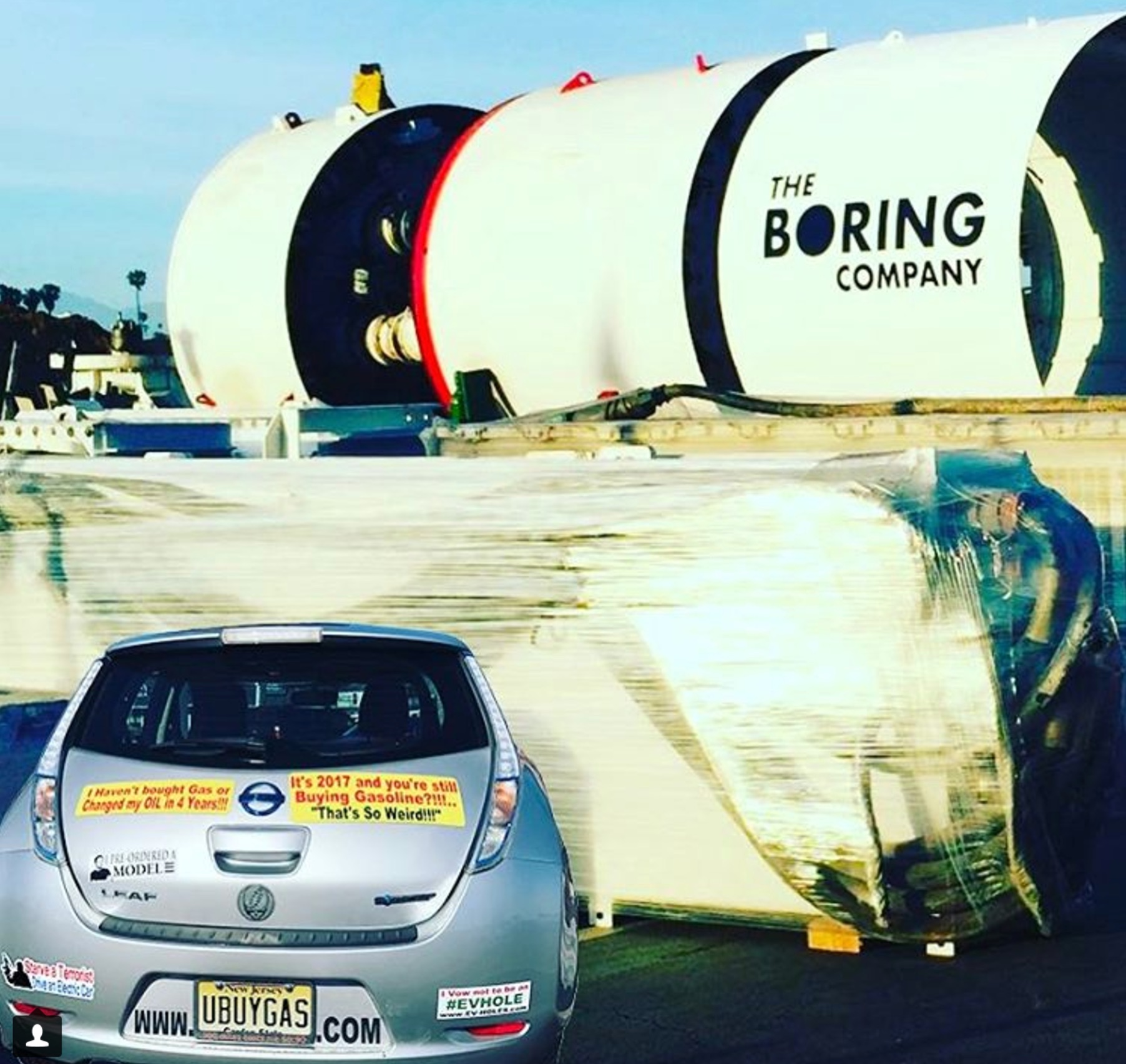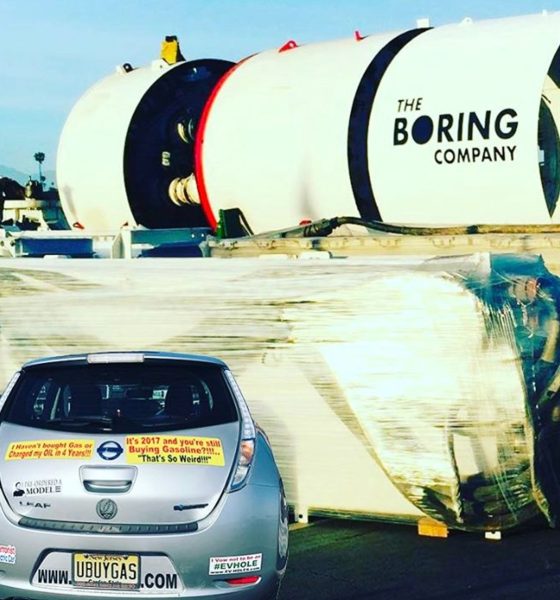

News
SpaceX & Boring Co. engineers are flying to Thailand to assess options for rescue efforts
In a recent update on Twitter, Elon Musk stated that engineers from SpaceX and The Boring Company would be flying to Thailand tomorrow to assess how to best help the Thai government in its rescue efforts for the stranded soccer players in the Tham Luang Nang Non cave complex.
Musk’s recent statements come as a response to updates posted by James Yenbamroong, an entrepreneur and founder of mu Space Corp, who stated that SpaceX engineers had already reached out in an attempt to connect with the Thai government. Government officials are currently looking into three plans to rescue the 12 stranded children and their coach. Among these involve teaching the young soccer players to dive, draining the caves of water to make extraction easier, and drilling a hole from the surface to provide a way out.
SpaceX & Boring Co engineers headed to Thailand tomorrow to see if we can be helpful to govt. There are probably many complexities that are hard to appreciate without being there in person.
— Elon Musk (@elonmusk) July 6, 2018
Yesterday, Musk offered to dropship Tesla Powerpacks and water pumps on the site of the rescue efforts to help in draining the caves. Musk also offered technology from The Boring Company as a means to help with the Thai government’s third rescue option. Among the most challenging portions of the cave, however, is a 70cm cross-section located about 3.1 miles away from the stranded soccer team, which gives trouble to the water pumps. The Thai government also expressed some reservations about the idea of digging a hole to reach the children and their coach, considering that the air pocket where the group is currently located is half a mile underground.
In a series of tweets today, Musk threw some ideas that could work to help in draining the caves and retrieving the children. According to Musk, it might be worth looking into the idea of inserting a 1-meter diameter nylon tube through the cave network that could be inflated with air “like a bouncy castle.” This would create an air tunnel underwater against the cave roof and auto-conform to odd shapes in the network including the tricky 70cm cross-section. Velcro slits at the ends of the tubes, as well as a continuous air feed, would allow the tube to remain inflated. According to Musk, this particular solution would require little power since that the work done is low.

A map of the cave system where the members of the Thai Wild Boar soccer team are located. [Credit: James Yenbamroong/Twitter]
The Wild Boar Soccer Team entered the Tham Luang Nang Non cave complex last June 23. Due to the monsoon rains, however, the team, comprised of children aged 11-15, as well as their 25-year-old coach, were forced to take shelter in an air pocket 2.5 miles away from the entrance to the caves. The team was located by two British divers last Monday, and since then, the children have been supplied with much-needed food and other survival supplies. Thai Navy SEAL divers, including a doctor and a nurse, also stayed with the soccer team on Tuesday.
The ongoing rescue efforts have taken a toll on the rescuers themselves. As noted by The Guardian, Saman Kunan, a former Navy Seal diver who opted to assist in the rescue, recently died while volunteering in the caves. Kunan was found unconscious in the caves after he transported tanks from the caves’ third chamber. First aid was attempted by his colleagues on site, but efforts to revive him were ultimately unsuccessful.
Tesla is no stranger to humanitarian efforts. The company has responded to Puerto Rico’s call for help in reviving its battered power system after Hurricane Maria. Tesla was also pivotal in providing power for the first time to a town in the Philippines that has never experienced a constant power supply in its history.

News
Tesla FSD fleet is nearing 7 billion total miles, including 2.5 billion city miles
As can be seen on Tesla’s official FSD webpage, vehicles equipped with the system have now navigated over 6.99 billion miles.

Tesla’s Full Self-Driving (Supervised) fleet is closing in on almost 7 billion total miles driven, as per data posted by the company on its official FSD webpage.
These figures hint at the massive scale of data fueling Tesla’s rapid FSD improvements, which have been quite notable as of late.
FSD mileage milestones
As can be seen on Tesla’s official FSD webpage, vehicles equipped with the system have now navigated over 6.99 billion miles. Tesla owner and avid FSD tester Whole Mars Catalog also shared a screenshot indicating that from the nearly 7 billion miles traveled by the FSD fleet, more than 2.5 billion miles were driven inside cities.
City miles are particularly valuable for complex urban scenarios like unprotected turns, pedestrian interactions, and traffic lights. This is also the difference-maker for FSD, as only complex solutions, such as Waymo’s self-driving taxis, operate similarly on inner-city streets. And even then, incidents such as the San Francisco blackouts have proven challenging for sensor-rich vehicles like Waymos.
Tesla’s data edge
Tesla has a number of advantages in the autonomous vehicle sector, one of which is the size of its fleet and the number of vehicles training FSD on real-world roads. Tesla’s nearly 7 billion FSD miles then allow the company to roll out updates that make its vehicles behave like they are being driven by experienced drivers, even if they are operating on their own.
So notable are Tesla’s improvements to FSD that NVIDIA Director of Robotics Jim Fan, after experiencing FSD v14, noted that the system is the first AI that passes what he described as a “Physical Turing Test.”
“Despite knowing exactly how robot learning works, I still find it magical watching the steering wheel turn by itself. First it feels surreal, next it becomes routine. Then, like the smartphone, taking it away actively hurts. This is how humanity gets rewired and glued to god-like technologies,” Fan wrote in a post on X.
News
Tesla starts showing how FSD will change lives in Europe
Local officials tested the system on narrow country roads and were impressed by FSD’s smooth, human-like driving, with some calling the service a game-changer for everyday life in areas that are far from urban centers.

Tesla has launched Europe’s first public shuttle service using Full Self-Driving (Supervised) in the rural Eifelkreis Bitburg-Prüm region of Germany, demonstrating how the technology can restore independence and mobility for people who struggle with limited transport options.
Local officials tested the system on narrow country roads and were impressed by FSD’s smooth, human-like driving, with some calling the service a game-changer for everyday life in areas that are far from urban centers.
Officials see real impact on rural residents
Arzfeld Mayor Johannes Kuhl and District Administrator Andreas Kruppert personally tested the Tesla shuttle service. This allowed them to see just how well FSD navigated winding lanes and rural roads confidently. Kruppert said, “Autonomous driving sounds like science fiction to many, but we simply see here that it works totally well in rural regions too.” Kuhl, for his part, also noted that FSD “feels like a very experienced driver.”
The pilot complements the area’s “Citizen Bus” program, which provides on-demand rides for elderly residents who can no longer drive themselves. Tesla Europe shared a video of a demonstration of the service, highlighting how FSD gives people their freedom back, even in places where public transport is not as prevalent.
What the Ministry for Economic Affairs and Transport says
Rhineland-Palatinate’s Minister Daniela Schmitt supported the project, praising the collaboration that made this “first of its kind in Europe” possible. As per the ministry, the rural rollout for the service shows FSD’s potential beyond major cities, and it delivers tangible benefits like grocery runs, doctor visits, and social connections for isolated residents.
“Reliable and flexible mobility is especially vital in rural areas. With the launch of a shuttle service using self-driving vehicles (FSD supervised) by Tesla in the Eifelkreis Bitburg-Prüm, an innovative pilot project is now getting underway that complements local community bus services. It is the first project of its kind in Europe.
“The result is a real gain for rural mobility: greater accessibility, more flexibility and tangible benefits for everyday life. A strong signal for innovation, cooperation and future-oriented mobility beyond urban centers,” the ministry wrote in a LinkedIn post.
News
Tesla China quietly posts Robotaxi-related job listing
Tesla China is currently seeking a Low Voltage Electrical Engineer to work on circuit board design for the company’s autonomous vehicles.

Tesla has posted a new job listing in Shanghai explicitly tied to its Robotaxi program, fueling speculation that the company is preparing to launch its dedicated autonomous ride-hailing service in China.
As noted in the listing, Tesla China is currently seeking a Low Voltage Electrical Engineer to work on circuit board design for the company’s autonomous vehicles.
Robotaxi-specific role
The listing, which was shared on social media platform X by industry watcher @tslaming, suggested that Tesla China is looking to fill the role urgently. The job listing itself specifically mentions that the person hired for the role will be working on the Low Voltage Hardware team, which would design the circuit boards that would serve as the nervous system of the Robotaxi.
Key tasks for the role, as indicated in the job listing, include collaboration with PCB layout, firmware, mechanical, program management, and validation teams, among other responsibilities. The role is based in Shanghai.
China Robotaxi launch
China represents a massive potential market for robotaxis, with its dense urban centers and supportive policies in select cities. Tesla has limited permission to roll out FSD in the country, though despite this, its vehicles have been hailed as among the best in the market when it comes to autonomous features. So far, at least, it appears that China supports Tesla’s FSD and Robotaxi rollout.
This was hinted at in November, when Tesla brought the Cybercab to the 8th China International Import Expo (CIIE) in Shanghai, marking the first time that the autonomous two-seater was brought to the Asia-Pacific region. The vehicle, despite not having a release date in China, received a significant amount of interest among the event’s attendees.








